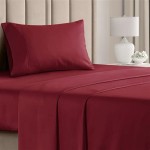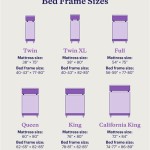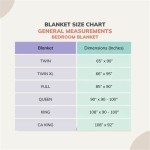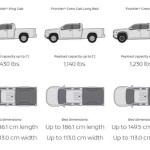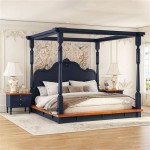Standard Size Queen Bed Measurements: A Comprehensive Guide
The queen size bed is a popular choice for individuals and couples seeking a balance between space and affordability. Understanding the precise dimensions of a queen bed is crucial when planning a bedroom layout, selecting bedding, and ensuring compatibility with existing furniture. This article provides a comprehensive overview of standard queen bed measurements, exploring the variations and considerations necessary for a well-informed decision.
The primary benefit of opting for a queen bed lies in its versatility. It offers significantly more sleeping space than a full-size bed, making it comfortable for couples without requiring the expansive footprint of a king-size bed. This makes it ideal for master bedrooms, guest rooms, and even larger single bedrooms where maximizing floor space is not the primary concern.
Beyond the overall dimensions, understanding the nuances of the queen bed frame and mattress dimensions is equally important. Different frame styles can add to the overall footprint of the bed, while variations in mattress thickness can affect the bed's height and overall aesthetic. These nuances will be explored in detail, allowing readers to navigate the complexities of queen bed measurements with confidence.
The Standard Queen Mattress Dimensions
The standard queen size mattress measures 60 inches wide by 80 inches long. This translates to 5 feet in width and 6 feet 8 inches in length. These measurements are generally consistent across different mattress brands and types, providing a reliable benchmark for selecting bedding and accessories. Therefore, when purchasing sheets, comforters, and bed skirts, these dimensions should be considered. Deviation from these measurements are infrequent, but important to note as well.
It's important to note that the listed dimensions refer specifically to the sleeping surface of the mattress. The overall dimensions of the bed, including the frame, headboard, and footboard, will naturally be larger. This is crucial to factor in when assessing whether a queen bed will comfortably fit within a given bedroom space. For example, a platform bed frame will typically add several inches to the width and length of the mattress, while a bed with a large headboard can significantly increase the overall length.
Mattress thickness, also known as the height, is another important parameter to consider. While the width and length of a queen mattress are standardized, the thickness can vary considerably, ranging from thin mattresses (less than 8 inches) to exceptionally thick mattresses (14 inches or more). The chosen mattress thickness impacts the overall height of the bed, which in turn affects ease of getting in and out of bed, as well as the visual proportion of the bed within the room. It also affects bed sheet fit, as deep pocket sheets are required for thicker mattresses.
Furthermore, the weight of a queen mattress can vary considerably depending on the materials used in its construction. Memory foam mattresses tend to be heavier than innerspring mattresses, while hybrid mattresses may fall somewhere in between. This is a crucial consideration when moving the mattress or setting up the bed frame, as heavier mattresses may require additional assistance. If the mattress is too heavy it may require specific types of bed frames that can handle the weight of the specific mattress type.
Queen Bed Frames: Considerations and Variations
The bed frame plays a critical role in supporting the mattress and contributing to the overall aesthetic of the bed. Queen bed frames come in various styles, each with its own unique dimensions and characteristics. Understanding these variations is essential for selecting a frame that complements the mattress and fits seamlessly within the bedroom space.
Platform bed frames are a popular choice for modern bedrooms. They typically feature a solid or slatted surface that eliminates the need for a box spring. Platform beds often have a low profile, contributing to a minimalist aesthetic. The overall dimensions of a platform bed frame will generally be slightly larger than the mattress dimensions, typically adding a few inches to both the width and length.
Traditional bed frames, on the other hand, often require a box spring to provide adequate support for the mattress. These frames typically consist of a headboard, footboard, and side rails. The addition of a box spring will significantly increase the overall height of the bed, as well as potentially adding a few inches around the frame’s perimeter. When selecting a box spring, it's crucial to ensure that it matches the queen mattress dimensions precisely. Common sizes are full, low, and ultra low profile, and each can add a different amount to the overall bed height.
Sleigh beds are characterized by their curved headboard and footboard, reminiscent of a traditional sleigh. These beds often have a grand, opulent appearance, suitable for larger bedrooms. The curved design of the headboard and footboard can add significantly to the overall length of the bed, so careful measurement is crucial when planning the bedroom layout.
Storage beds offer a functional solution for maximizing space in smaller bedrooms. These beds feature built-in drawers or compartments beneath the mattress, providing ample storage for clothing, linens, or other items. The addition of storage drawers can increase the overall footprint of the bed, especially in terms of width and depth. Consider if the placement of the drawers will allow them to fully extend without hitting a wall or other furniture.
Adjustable bed frames are becoming increasingly popular, allowing users to customize the position of the mattress for optimal comfort and support. These frames typically consist of a motorized base that can be adjusted to raise or lower the head and foot of the bed. Adjustable bed frames often have a more complex design than traditional frames, and the overall dimensions can vary depending on the specific model. Understanding an adjustable bed frame's dimensions and weight capacities is essential, especially if a headboard or footboard is compatible.
Room Size Considerations for Queen Beds
Determining whether a queen bed is suitable for a particular bedroom involves careful consideration of the room's dimensions and the placement of other furniture. A general rule of thumb is to allow for at least 2 feet of space on either side of the bed, as well as at the foot of the bed, to ensure comfortable movement around the room. This guideline helps prevent a crowded or cramped feeling and ensures easy access to drawers, closets, and other areas of the room.
For a minimum bedroom size, a room measuring 10 feet by 10 feet could accommodate a queen bed, but likely would not be ideal. This size allows for the bed and minimal furniture, such as a small nightstand. However, it may feel cramped, especially if the room has low ceilings or is cluttered. It is important to consider the actual width and length of the bed frame along with the mattress dimensions.
A more comfortable bedroom size for a queen bed would be 12 feet by 12 feet or larger. This size provides ample space for the bed, nightstands, a dresser, and potentially a small seating area. The larger room dimensions allow for greater flexibility in furniture placement and create a more spacious and relaxing atmosphere.
The placement of doorways, windows, and closets can also significantly impact the perceived size and functionality of the bedroom. Avoiding blocking doorways or windows with the bed or other furniture is crucial for maintaining a sense of openness and maximizing natural light. Furthermore, ensuring easy access to closets and drawers is essential for daily convenience.
The height of the ceiling is another factor to consider. In rooms with low ceilings, a lower profile bed frame can help create a sense of spaciousness. Conversely, in rooms with high ceilings, a taller bed frame may be more visually appealing and proportionate. The color scheme and overall decor of the room can also influence the perceived size of the space. Lighter colors tend to make a room feel larger, while darker colors can create a cozier, more intimate atmosphere.
In conclusion, understanding the nuances of standard queen bed measurements is essential for making informed decisions about bedroom furniture and layout. By carefully considering the dimensions of the mattress, the bed frame, and the overall room size, individuals can create a comfortable and aesthetically pleasing sleeping environment. Whether furnishing a master bedroom, a guest room, or a single bedroom, a queen bed offers a versatile and practical solution for optimizing space and maximizing comfort.

Queen Size Bed Dimensions Guide Dreamcloud

Queen Size Bed Dimensions Compared To Other Sizes Eachnight

Mattress Sizes Chart And Bed Dimensions Guide Amerisleep

Bed Sizes Guide Curtain Of Maine

The Official Organic Mattress Size Guide 2025 Edition

Mattress Sizes Chart Bed Dimensions Guide Purple

Mattress Size Guide Secrets For Every Room Eachnight

Us Bed Sizes Chart Dimensions

Queen Size Bed In Feet

Bed Guide 5 Tips On Choosing The Right Size Mattress Archdaily

